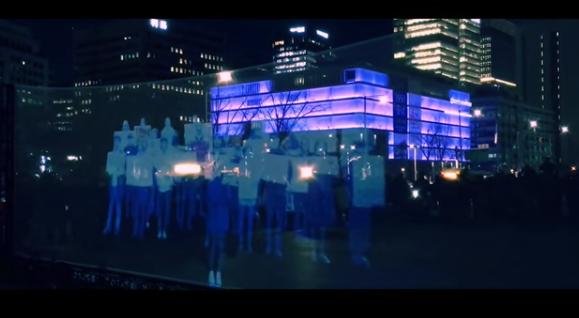The Seoul district of Gwanghwamun hosted the world’s second "hologram protest" Wednesday. Public protests are illegal there. YouTube screenshot
SEOUL, Feb. 24 (UPI) -- Civic rallies stepped into virtual reality in South Korea with the world's second "hologram protest."
The demonstration, a moving image of picketers, lasted for about half an hour with no interruptions from police, South Korean newspaper Donga Ilbo reported Wednesday.
The event, organized by a local branch of Amnesty International, was held to rally against the controversial restrictions on public demonstrations in central Seoul.
Yonhap reported that between January and October 2015, more than 80 percent of planned rallies were banned, and police response to protesters has become more violent and included the use of water cannons.
Kim Hee-jin, director of Amnesty International Korea, said the primary reason for the hologram protest was to speak out against police brutality against farmer activist Baek Nam-gi, who was seeking an apology from the government after being targeted with a water cannon.
Baek had collapsed on site and remains unconscious after the incident, Kim said, and Amnesty International is seeking answers.
In the hologram footage, five unidentified South Koreans introduce themselves as participants in a "phantom protest" and urged that the rally be the last demonstration of its kind.
People should enjoy freedom of assembly and demonstrations, the protesters said in the moving image.
Police did not interrupt the hologram footage, which lasted for about half an hour, but stood nearby monitoring the situation.
Police told reporters the hologram is technically not a protest but a "cultural artifact," that is, until live protesters begin rallying in response to the footage.
According to the hologram, the South Korean government has been cracking down on rallies since the Sewol ferry disaster and has banned all protests from the area of Seoul known as Gwanghwamun, to the presidential Blue House.
Passersby said the hologram protest was informative, and one South Korean college student, Kim Jae-sung, 22, told the Donga that he did not know civic protests had been banned in the area.
The first hologram protest was held in Spain in April 2015, where virtual thousands marched against a law banning demonstrations.















